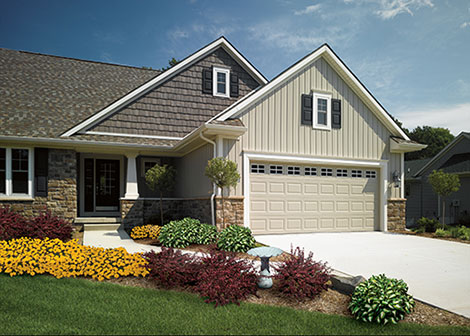Embark on a journey through the world of board and batten siding houses, where traditional charm meets modern aesthetics. Learn about the origins, designs, and maintenance of these unique homes that have captured the hearts of many homeowners.


Introduction to Board and Batten Siding Houses
Board and batten siding is a type of exterior cladding that consists of wide wooden boards with thin strips (battens) covering the seams between the boards. This style of siding has been used for centuries and continues to be a popular choice for homeowners.Historical Significance of Board and Batten Siding
Board and batten siding can be traced back to medieval Europe, where it was commonly used in the construction of barns, cottages, and other rural buildings. The vertical design helped shed water and provided a simple yet effective way to protect the structure from the elements. Over time, this practical siding style became associated with traditional architecture.Popularity in Modern Architecture
In recent years, board and batten siding has experienced a resurgence in popularity in modern architecture. Its clean lines, textured appearance, and versatility make it a favorite choice for both traditional and contemporary homes. Additionally, the wide range of materials available for board and batten siding allows for customization to suit various architectural styles and preferences.Design and Construction of Board and Batten Siding Houses
Board and batten siding houses are known for their charming and rustic appearance, characterized by vertical boards with narrow strips (battens) covering the seams. These houses often evoke a sense of traditional craftsmanship and historical charm.Design Elements of Board and Batten Siding Houses
Typical design elements of board and batten siding houses include:- Vertical boards: These boards are the main feature of the siding, creating a striking visual appeal.
- Battens: Narrow strips placed over the seams between the boards, adding texture and depth to the overall look.
- Rustic charm: Board and batten siding houses often have a quaint and cozy aesthetic, perfect for traditional or farmhouse-style homes.
- Color variations: Homeowners can choose from a variety of colors to customize the look of their board and batten siding.
Materials Used in Constructing Board and Batten Siding
In constructing board and batten siding houses, the following materials are commonly used:- Wood: Cedar, pine, or redwood are popular choices for the boards and battens due to their durability and natural beauty.
- Fiber cement: A low-maintenance alternative to wood, fiber cement boards are resistant to rot, pests, and fire.
- Vinyl: An economical option, vinyl boards and battens are easy to install and require minimal upkeep.
- Metal: Steel or aluminum boards and battens offer a modern twist on the traditional siding style.
Installing Board and Batten Siding on a House
The process of installing board and batten siding involves the following steps:- Prepare the surface: Ensure the house exterior is clean, dry, and free of any debris before installation.
- Measure and cut boards: Measure the boards to fit the dimensions of the house walls and cut them to size accordingly.
- Attach the boards: Secure the vertical boards to the exterior wall using nails or screws, leaving space for the battens.
- Add battens: Install the narrow battens over the seams between the boards, covering any gaps and enhancing the visual appeal.
- Finish and seal: Once all boards and battens are in place, finish the siding with paint or stain to protect it from the elements.
Pros and Cons of Board and Batten Siding Houses
Board and batten siding has become a popular choice for house exteriors, offering a unique aesthetic appeal and practical benefits. However, like any other building material, it also comes with its own set of advantages and disadvantages.Advantages of Board and Batten Siding
- 1. Rustic Charm: Board and batten siding adds a rustic and traditional look to the exterior of a house, enhancing its curb appeal.
- 2. Versatility: This type of siding can be customized in terms of colors, patterns, and materials, allowing homeowners to achieve a personalized look.
- 3. Durability: Board and batten siding is known for its durability and ability to withstand harsh weather conditions, making it a long-lasting choice.
- 4. Easy Maintenance: With minimal seams and joints, maintaining board and batten siding is relatively easy compared to other siding materials.
Drawbacks of Board and Batten Siding
- 1. Higher Cost: Board and batten siding can be more expensive upfront compared to other siding options, which may deter budget-conscious homeowners.
- 2. Limited Insulation: While board and batten siding provides some insulation, it may not be as energy-efficient as other types of siding that offer better thermal performance.
- 3. Susceptible to Pest Infestation: Gaps between the boards can attract pests like insects and rodents, potentially leading to infestations if not properly sealed.
Durability Comparison with Other Siding Materials
When it comes to durability, board and batten siding holds its own against other common siding materials like vinyl, wood, and fiber cement. While each material has its strengths and weaknesses, board and batten siding shines in terms of longevity and resistance to wear and tear.Maintenance and Care for Board and Batten Siding Houses
Maintaining board and batten siding is essential to ensure its longevity and aesthetic appeal. By following proper care practices, you can prevent damage and prolong the life of your siding.Tips for Maintaining Board and Batten Siding
- Regularly inspect the siding for any signs of damage, such as cracks, holes, or rot.
- Keep the siding clean by washing it with a mild detergent and water to remove dirt and debris.
- Repaint or re-stain the siding every few years to protect it from the elements.
- Trim any vegetation near the siding to prevent moisture buildup and potential damage.
Frequency of Maintenance
Board and batten siding houses typically require maintenance every 3-5 years, depending on the climate and exposure to harsh weather conditions. Regular inspections should also be conducted at least once a year to catch any issues early.Common Issues and Solutions
Some common issues that may arise with board and batten siding include moisture damage, rot, and insect infestations. To address these problems:- Fix any cracks or holes in the siding promptly to prevent moisture from seeping in.
- Treat any signs of rot with a wood preservative and replace damaged boards if necessary.
- Use insecticides or pest control measures to eliminate any insects that may be damaging the siding.











